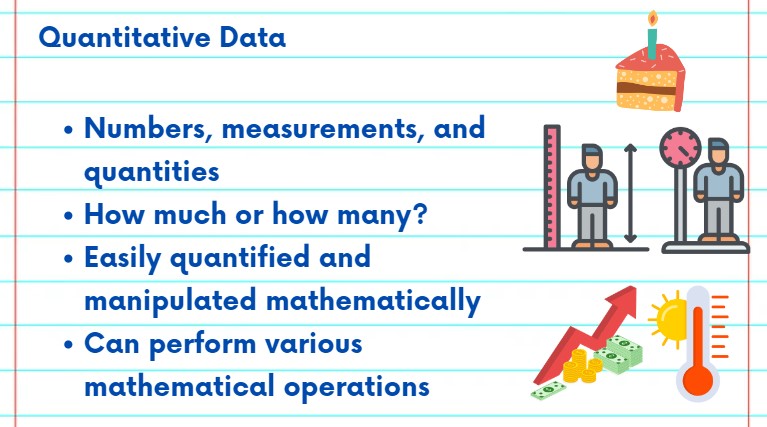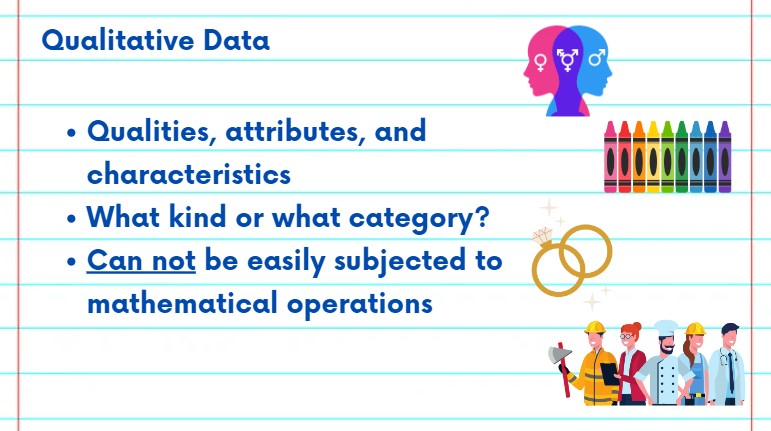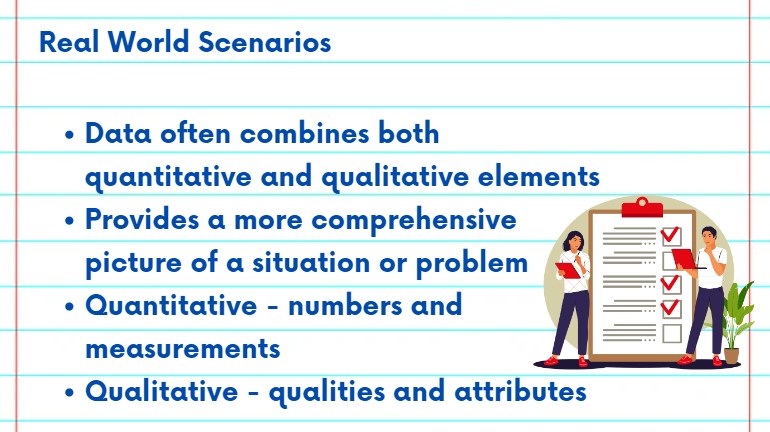This NSDC Data Science Flashcards series will teach you about the different kinds of data, including how you can use them to strengthen your research. This installment of the NSDC Data Science Flashcards series was created by Varalika Mahajan. Recordings were done by Sneha Dahiya. You can find these videos on the NEBDHub Youtube channel.
We’re going to explore a core concept in the world of data – the distinction between quantitative and qualitative data. Understanding the difference these two types is essential for anyone venturing into the exciting realm of data analysis.

Let’s begin with quantitative data. This type of data deals with numbers, measurements, and quantities. It’s all about ‘how much’ or ‘how many.’
Quantitative data is precise and can be easily quantified and manipulated mathematically. Examples include age, height, weight, income, and temperature.
With quantitative data, we can perform various mathematical operations like addition, subtraction, multiplication, and division. It allows us to calculate averages and percentages and make meaningful comparisons.

Now, let’s move on to qualitative data. This type of data is quite different. It deals with qualities, attributes, and characteristics rather than numerical values.
Qualitative data answers questions like ‘what kind’ or ‘what category.’ Examples include gender, color, marital status, and job type.
Unlike quantitative data, qualitative data can’t be easily subjected to mathematical operations. However, it’s incredibly valuable for categorizing and understanding the world around us.

In many real-world scenarios, data often combines both quantitative and qualitative elements. Together, these data provide a more comprehensive picture of a situation or problem. For instance, in a survey, you might collect quantitative data about respondents’ ages and incomes along with qualitative data about their opinions and preferences.
Understanding the difference between quantitative and qualitative data is crucial for anyone working with data. Quantitative data deals with numbers and measurements, while qualitative data focuses on qualities and attributes.
Please follow along with the rest of the NSDC Data Science Flashcard series to learn more about data science ethics.
